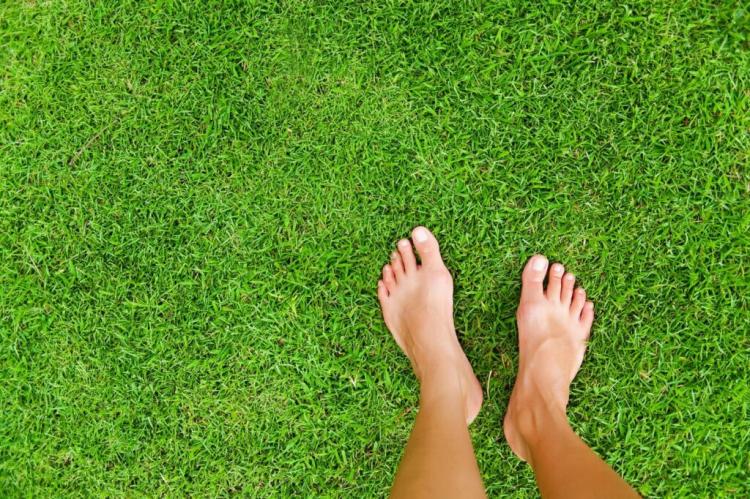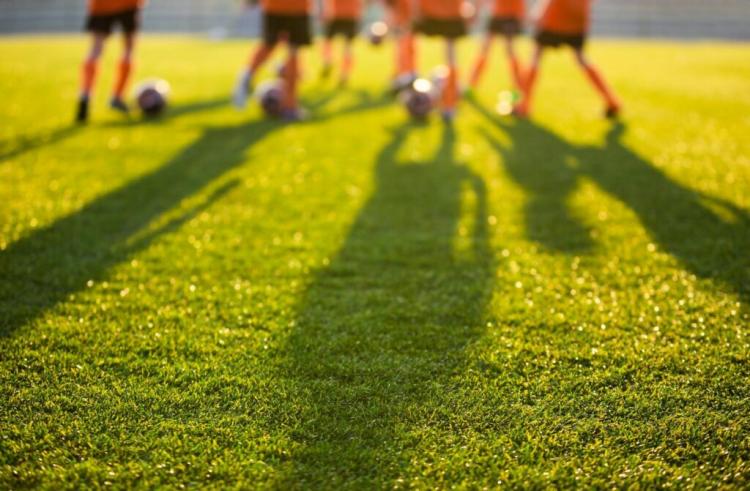Which lawn type makes sense when? Our tips for the right lawn seeds
Before creating a new lawn, you should be clear about the use, soil type, location and preferences. Because there are different types of lawn possible, which we present in our lawn guide. Here you can find out everything you need to know about lawn seeds.

Choosing the right lawn seeds will bring you closer to your dream lawn [Photo: Mila Supinskaya Glashchenko / Shutterstock.com]
Everyone has a lawn – it can't be that difficult! Most gardening newbies who are still – or not yet – green behind the ears probably think like this or something like that. But even though the lawn system seems trivial at first: Just by choosing the right seeds, you pave the way for your dream lawn. So that you pick the right seeds, we explain which lawn is the right one for your garden.
Creating a new lawn: which mixture do I need?
Table of Contents
When it comes to creating new lawns, there is not just one solution for everyone. Different locations differ in terms of weather conditions, exposure and soil. In order to meet these conditions, the turf-seed mixtures used must also be composed differently. If the right seeds are used from the outset, you avoid later trouble with weeds, moss, poor growth and high maintenance costs.
But which lawn is right for you? We have created a decision-making aid that includes the soil and the subsequent use of the lawn – so you can see at a glance which lawn seeds you should buy.
| conditions | Recommended lawn |
|---|---|
| Very good, loamy, sandy soil, rich in humus, without deep compaction. Location in full sun. |
Any lawn for use is possible, sports and play lawns are recommended. Ornamental lawns (RSM 1.1) and golf lawns (RSM 4) that require intensive care are also possible. |
| Light, poor soil with a high proportion of sand and little humus without deep compaction. Sunny to partially shaded location. Low rainfall. |
Dry grass is recommended for the home garden area. For areas that are not accessible, landscaped lawns are suitable for Dry locations (RSM 7.2). |
| Medium-quality soil with little or no compaction. Sunny to partially shaded location without deep shade. A lot is entered and used, for example for garden parties, for games or for sports. |
Any kind of grass can be used. Durable sports and play lawns are recommended. |
| Medium-quality soil with little or no compaction. Location partly in deep shade for many hours of the day. |
We recommend shaded lawns, which are also used in the sunny areas of the area, so that a uniform surface is created. |
| Normal, nutrient-rich to nutrient-poor soil. Area is hardly or not at all stepped on. | Bee pasture, butterfly pasture or beneficial meadow meadow are recommended and very easy to care for. Landscape lawns (RSM 7.1) are also possible, but visually less appealing. For large areas: RSM 8.1 possible for biotope areas with a large variety of species. |
| Heavily compacted, stony subsoil. Sunny to shady location. |
Parking lot lawns / gravel lawns (RSM 5.1) are recommended. |
Tip: If you want to create a lawn under normal conditions, but want to spend less time and water on watering in summer, we also recommend a dry lawn such as our Plantura dry lawn in premium quality. Dry lawn is also known as “water saving lawn” because it has to be watered significantly less in dry phases than normal lawn. But it has a slightly different look than a lawn for use.

Depending on the use, a different lawn has to be found – sports fields, for example, have to be very resilient [Photo: matimix / Shutterstock.com]
Conclusion: which grass seeds to buy?
Most home gardens get along well with a sports and play lawn, as it grows well in normal soil and conditions. If there is a lot of shade, drought or a very compacted soil, a special lawn is required. Easy-care flower meadows are also an option for less-used areas. When choosing a lawn-seed mixture, always pay attention to the information provided by the manufacturer. At Plantura, we believe in sustainable growth. We therefore provide our entire Plantura lawn family with detailed instructions and provide you with all further information in various special articles – for example in our extensive lawn guide.

Different lawn seeds are required depending on the type of use
Creating a new lawn: does turf make sense?
If you want to green an area with lawn very quickly, turf can be an option for you. Here, too, there is a – albeit smaller – selection of special turf turf designed for dry areas, shade, for decorative purposes only or for sporting activities. However, laying turf is not as easy as it seems and the price per square meter is of course much higher than sowing it yourself. In addition, sowing your own seeds is more environmentally friendly than using turf. This is finally produced elsewhere, occupies agriculturally usable areas, is fertilized with mineral fertilizers and then extracted with the help of machines and transported to you. A careful comparison of turf and lawn sowing is therefore worthwhile.

Rolled turf plants an area very quickly, but has a higher price per square meter [Photo: Alexander Raths / Shutterstock.com]
Improving an existing lawn: how do you do it?
Do you have a lawn that has been neglected for years, is full of weeds or moss and has no vigor? Then the first thing to decide is: Is it worth saving the lawn? This can be worthwhile if there are still many lawn plants to be seen over the entire area. In this case, it is first mowed deeply, then scarified and – in the case of compacted soil – also ventilated (aerated). Then a mainly organic lawn fertilizer such as our Plantura organic lawn fertilizer and possibly lime is used. Finally, the sowing of a suitable lawn-seed mixture follows. If the area consists almost entirely of moss or weeds, it is best to plow it up and sown the lawn again.
Tip : Remember: the later lawn should be uniform. You should therefore decide either for lawn regeneration or for a completely new system.

If there are still many grass plants on the whole area, regeneration is worthwhile [Photo: Sunbunny Studio / Shutterstock.com]
What to consider when creating or improving lawns
The right time
New lawns and repairs can generally be carried out between April and October. The ideal period is either late April to early May or in autumn between September and October. It is important that the temperatures during sowing are permanently above 12 ° C so that optimal germination conditions exist for the young lawn.
Which type of lawn is the best?
Seed mixtures for the lawn always consist of several genera, species and varieties of grass. No type of lawn is good, bad or the very best per se. But they have different strengths and weaknesses. The trick is to choose the right mix, i.e. the right type of lawn, for your own conditions and needs. This is done with ease using the table provided above, which will help you find the right type of lawn for your garden.
The lawn overseeding
If your lawn is actually still quite acceptable, but it only grows slowly and is already showing small gaps, simple reseeding – so to speak, a faster mini lawn regeneration – is the right way to get your green going again.
The lawn repair
Are there only a few larger holes in your lawn – for example, caused by molehills or by storing heavy objects on the lawn for a long time? Then a lawn repair is the right choice for you. You can use our Plantura lawn repairs for this purpose, for example.






